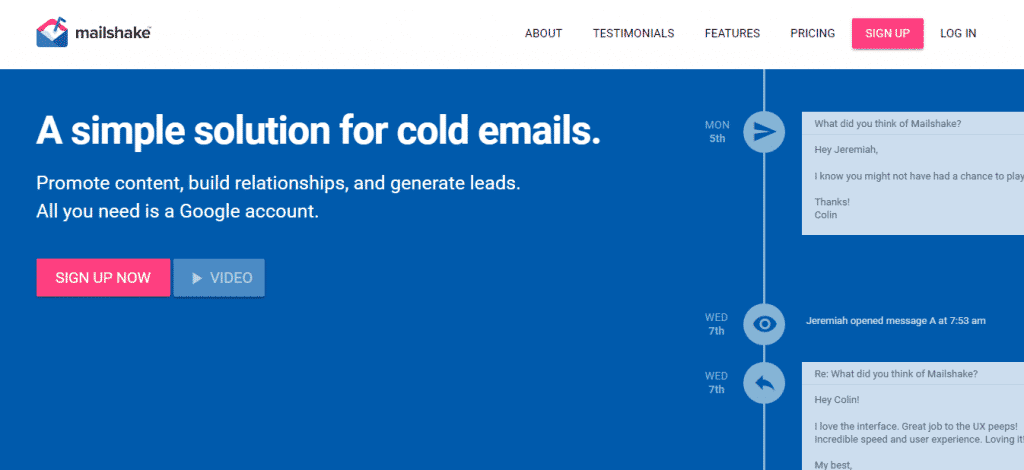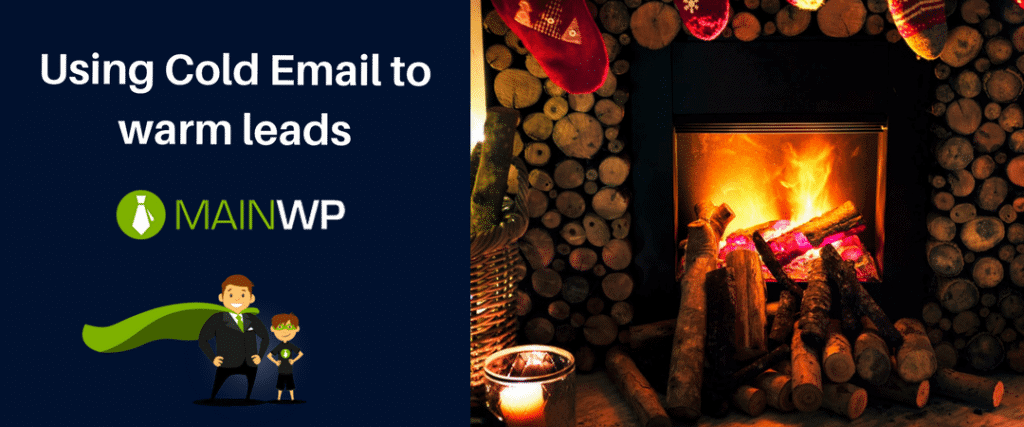There is still a place for prospecting using cold email. Today we are going to look at how you can get started using cold email.
When I was a little fella, every summer, my brother and I would visit my grandpa and granny. They lived on a farm at the end of a dirt road in rural North Arkansas. He had over 400 acres of land and about half dozen ponds and his land backed up to a small river.
We did the kinds of things that young boys do when they are on their grandparents’ farm. We fished.
One pond, in particular, is where spent most of our time. That pond was stocked full of catfish. When we made our way down to the pond, often on the tractor, we had some old dry dog food that we tossed into the pond to get the fish to come towards the top.
I guess that food was sort of like a cold email, it was there to help urge the fish to bite when we tossed our bait into the pond.
Two years ago, a Reddit user submitted his exact pitch for getting website design clients. After building a few sites and deciding on a niche, he began expanding his reach. As he tells it on Reddit,
I start by browsing the web for non-responsive websites that look like it’s straight out of 2001. I then spend about 1-2 hours creating a mock-up home page (with a Wordpress Template) using the exact same information on their current site, but just making it look 100x better and easier to navigate. (DISCLAIMER: Yes I use templates. Why? It’s fast, cheap, and if I NEED to get crazy I am comfortable customizing the theme. I highly recommend X Theme.)
In a world of Inbound marketing, social media, and digital marketing, there is still a place for prospecting using cold emails.
Why Cold Email?
When you are getting started, you have to find clients somehow. Sure, you are going to contact those in your network and start explaining you have a business and are offering services in website design or WordPress maintenance.
You may have even picked out a niche.
The beginning of it all is some sort of prospecting for clients. You remember that word, don’t you?
In a perfect world, we would set up our website complete with a nice funnel and watch the leads roll in and sign off on proposals every week. There are times, however, you have to do some prospecting.
Cold emailing is just that, prospecting.
By cold emailing, I don’t mean gathering a list of 200 targeted companies and mass emailing them. No, cold emailing is a bit more calculated.
via GIPHY – Wait till we get leads first, Blake
Using cold emailing you can get customers, connect with influencers, and land guest posts on high traffic sites.
Dmitry Dragilev explains how it helped him,
I took a startup from 0 to 40M page views and sold it to Google … through cold email.
I’ve published 1400+ guest posts and articles in most well known publications … through cold email.
I’ve built relationships with Gary Vaynerchuck, Tim Ferriss, Matt Mullenweg founder of WordPress, the Winklevoss Twins, on and on and on … through cold email.
Before launching into a cold email campaign, make sure you know your country’s laws on spam and how to determine if it is different than cold emails.
Make sure it’s legit
When it comes to using cold emails, you want to make sure that you are not spamming the intended recipient. How do you know that? Well, there are some tell signs of spam. According to Dragilev of Criminally Prolific, the signs of spam include
- Uses a fake name
- Doesn’t include contact information
- Isn’t personalized (the same email is sent to several people)
- Isn’t meant to start a conversation; rather, it’s usually targeting a direct purchase.
- Has a commercial motive
What is cold email? According to Dragilev, “Cold email is any email sent to a potential client that doesn’t have an existing connection to you.”
The Headline
The first thing your prospect will see is the headline. Headlines are extremely important whether you are writing a blog post, an email newsletter, a landing page or a cold email to a prospect.
Much will depend on the type of cold email you are writing. Are you sending an email to connect? Warm up a lead? Are you sending an email to get a meeting? Those are all different contexts.
Josh Sloan goes over some good tips for a headline at the Leadfuze blog. Emily Bauer provides, even more, tips at Propeller.

The Body of the email
There a number of things you can look at doing in the body of your email that is important. Today, we are going to touch on three things you can implement today: framework, follow up, x-factor.
Use a Framework
Often when searching for cold emails, you will find that many bloggers will offer a template. Templates are fine, but a framework is better. A framework implies the ability to adjust.
In fact, Laura Lopuch explains in her epic post at Copyhackers that you should experiment first, then template what works. She says,
Don’t template your cold email immediately! Testing is your learning opportunity
And then a little later in the article,
Once I figured out a cold email that worked well, I templated it. You should, too.
Your template, of course, becomes your framework. No doubt yours will be different than Laura’s as she is a writer. By the way, she gives you a template in the post. Modify it for website design or website maintenance and give it a spin.
Bring the X-Factor
When you look at the examples of cold emails you will find something very important. Take a look at Bernie Reeder’s post at Yesware. Notice something familiar?
If you look closely at the frameworks she proposes, you will notice that they are all copywriting formulas.
For years copywriters have used basic scientific principles of persuasion and influence to come up with a number of writing techniques that reliably draw readers into their content. These formulas just plain work – and can stop people in their tracks and compel them to read your cold email.
There is a need to test and create your own framework and there is a need to be direct and to the point, but your X-Factor is using good copywriting techniques.

Follow up
Finally, make sure you are following up as well as tracking your cold emails. There is an important reason to follow up as Oleg Starko explains,
When you send out a freelance pitch, chances are that most clients won’t even notice your message immediately. Others will see it but ignore it. Still others will open it, read it, then decide to reply later — but forget (of course).
Tracking is an important step and you will likely need a software or a plugin to handle this task. Using Gmail you can take advantage of Streak, MixMax, or Canned Responses. There are a number of other third-party software that you can utilize also, such as Yesware and MailShake.
If you have a client relationship manager, you can use that to track your cold email pitches. The bottom line is to track and follow up.
Over to you
Whether you are trying to connect to an influencer, pitch a guest post idea, or begin a relationship to pitch your services, cold emails can still be effective if you avoid spammy practices. Be sure you spend time testing and finding a framework that works for you and gets responses.
Need a little more help? Check out this resource.
In what ways have you used cold email to land projects?







